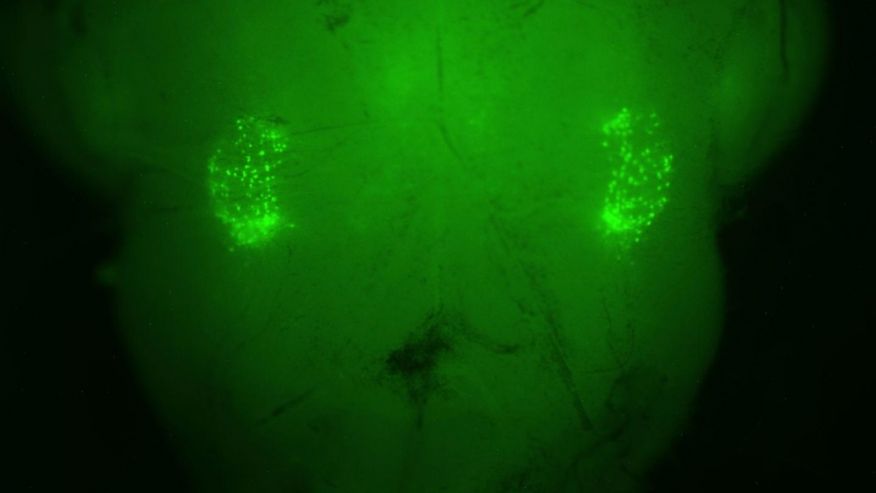to sigh

On each side of the brain stem, a florescent-green marker illuminates the 200 neurons that control the sighing reflex. (Stanford/Krasnow lab)
Shakespeare cautioned ladies to “sigh no more” over unfaithful lovers. But scientists say that’s easier said than done.
Exploring the biology of the sigh, researchers at the University of California, Los Angles and Stanford University said they have pinpointed the neural structures that tell the brain when and how to sigh. The researchers said their findings, reported Monday in the journal Nature, support the theory that sighing isn’t just an emotional outlet; it’s a vital biological process necessary for maintaining overall health.
Researchers are just starting to grasp why and how we sigh, and what happens when we don’t. In the brain, sighs stimulate neural activity, signal changes in behavior and reset breathing rates. In the respiratory system, sighs clear airways and help the lungs absorb oxygen. Too much or too little sighing can lead to neurological diseases, scientists say.
The scary thing your hiccups could mean
Novavax’s vaccine first to protect against common respiratory virus
Little-known neurological condition causes uncontrollable crying, laughter
“A sigh is the ultimate arousal” for the brain, said Nino Ramirez, director of the Center for Integrative Brain Research at the Seattle Children’s Research Institute, who wasn’t involved in the new study.
Humans breathe “restorative sighs” about once every five minutes, often without noticing. The double inhalation activates the brain’s cortex, the portion responsible for emotions, speech, recognition, reasoning and other higher functions, Dr. Ramirez said.
Shakespeare cautioned ladies to “sigh no more” over unfaithful lovers.
Source: Scientists identify brain chemical linked to sigh | Fox News